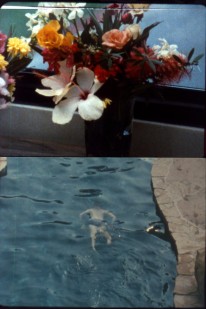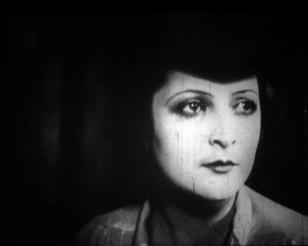Last Thursday, February 23rd, I attended the premiere of (In)Voluntary Memories – an exhibition hosted by Alfred State’s Bret Llewellyn Gallery. Alysia Kaplan, its creator, attempts to explore the concept of memories and their inclined nature of becoming rewritten. When returning to her hometown of Rochester, Kaplan claims she’s felt “dislocated” with the area. It’s environment is foreign to her, and it’s triggered her to question whether or not her perception can be internally manipulated over time.

“No matter what an image contains, we have a tendency to put ourselves in it.” – Kaplan stated this in regard to the images above, and it’s an idea I’m certain most of us can relate to. What I take away from the flowers may be different than what someone else takes away from them. Subjectivity is the prime philosophy of this exhibition; meaning derives from the audience, not the artist. And with this, we can see Kaplan’s postmodernist roots showing through. Resembling Dadaism, Kaplan provokes consumer thought, forcing her viewers to create their own interpretations.
Kaplan believes memories are a universal language and to ignore them is to deny ourselves. Sharing them to the world, we are likely to find someone else who has experienced something similar.

But just like old celluloid film however, our memories are subject to aging and disintegration. In her 16mm found footage video extracted from Visual Studies Workshop archives, Kaplan builds a story that plays on the nature of recognition. Consistencies between the worn authenticity of the film and the vintage sentimentality of memory make this sequence effective. Its documentation of personal history effectuates an interconnected sense of nostalgia, even if you hadn’t been the subject of experience.
Nostalgia – a word Kaplan has always struggled with. Often she is worried her work gets too precious, and I can see why. There were so many pieces in this exhibition that associate with the past. Black and white color schemes, film and photo scratches, themes of memory. It really can seem quite precious just thinking about it.
While her postmodernist style allowed us to speak for itself, there were several features that left me scratching my head. Kaplan conveyed an old, noir motif throughout much of the exhibition’s content. However, I feel as though a great deal of her artistic direction hadn’t quite been fully fleshed out.
How, exactly, one could empathize with several of the on-screen and on-canvas imagery without having experienced it is was left unanswered. Many connotate memories in the lens of old film – aged and desaturated. While Kaplan could easily associate the two, the presentation felt quite stereotypical and disconnected. Why must memory take this form? I don’t recall any of my real-life memories lacking color. It is this realization that weakens Kaplan’s intent.
Ultimately, the topic at hand is intriguing, just as the mind, in itself, is intriguing. Although Kaplan’s elements of design felt quite clichéd and disengaging, her conceptual presentation behind memories and their vanishing points came together with a purpose.
